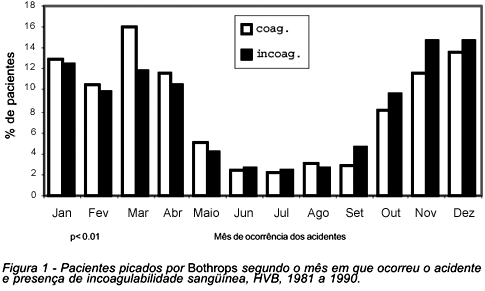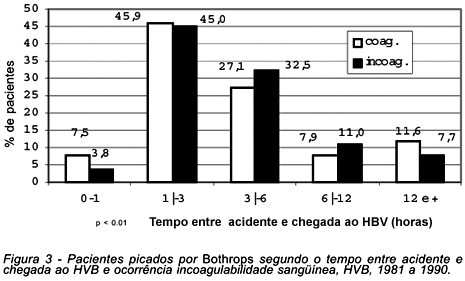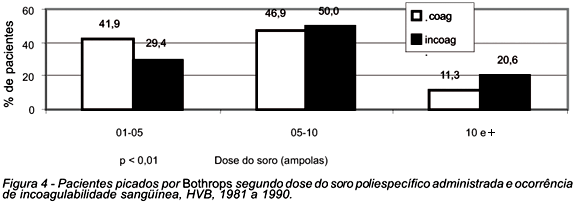This study aimed at assessing, in the envenoming by Bothrops, factors that are associated with blood incoagulability. Information was obtained from the charts of 2,991 patients admitted to Instituto Butantan, from 1981 to 1990. Factors positively associated with blood incoagulability (p<0.05) were: snake bite in the late months of the year; bites in the distal segments of the lower limbs; pain, edema, and bruising at the bite site; systemic bleeding and shock; dose of antivenom administered; time between bite and admission to Instituto Butantan. Size of the snake Bothrops jararaca; use of a tourniquet; and time between arrival to Instituto Butantan and start of the antivenom administration were negatively associated with blood incoagulability (p<0,05). Factors not associated with blood incoagulability (p>0.05) were: time of the bite; presence of recently swallowed prey in the snake gut; gender and age of the patient; blister, necrosis, and abscess at the bite site; occurrence of amputation, renal failure and death; presence of an incision at the bite site. We conclude that although blood incoagulability is associated with early manifestations of Bothrops envenoming, it is not associated with the clinical outcome.
Bothrops jararaca; Blood coagulability; Prognostic factors




